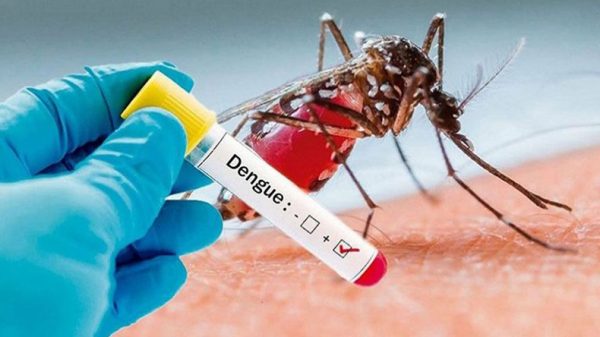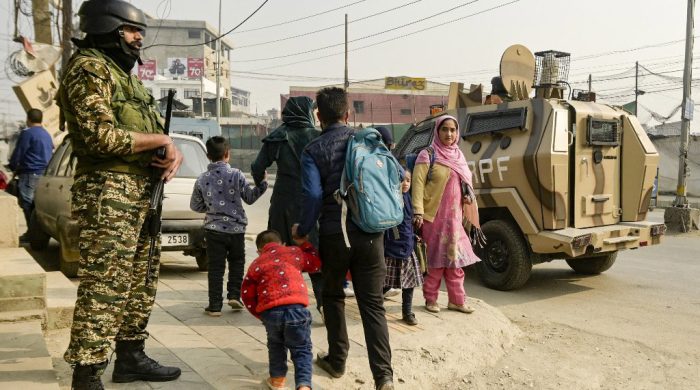Dengue rages in rural areas in Bangladesh

- Update Time : Saturday, October 21, 2023
- 21 Time View

Dengue fever rages in rural Bangladesh like wildfire, infecting more than one member of almost every family as the government has failed to recognise the disease as an epidemic.
An epidemic is an unexpected health event during which special measures are required to protect people against the diverse impacts of an abnormally spreading disease.
Health experts and epidemiologists said that the government was unwilling to declare dengue an epidemic to hide its failure to contain the viral disease, potentially creating conditions for an even worse health crisis next year.
The dengue virus, which infected people mostly in cities and towns until the past year, is now infecting hundreds in rural Bangladesh every day.
Recognising the dengue epidemic was the least the government could do, health experts and epidemiologists said, particularly after the disease went out of hand, endangering a nation reeling from the impacts of a pandemic and the worst inflation in more than a decade.
The Centers for Disease Control and Prevention, the national public health agency of the United States, considers it an epidemic when the number of cases of a disease suddenly exceeds normal figures.
Dengue is now an endemic disease in more than 100 countries around the world, according to the World Health Organization, with Bangladesh reporting its outbreak almost every year since 2000.
Epidemiologically, an endemic is a disease that continuously affects a particular community without experiencing a surge in its overall spread over time.
Over the five years ending in 2022, data released by the Directorate General of Health Services showed that Bangladesh on average recorded 41,016 dengue hospitalisations and 115 deaths every year.
But this year, dengue caused 2,51,101 people to seek admission at a very limited number of hospitals monitored by the government for the disease and 1,226 deaths until October 19.
Like other viral diseases, dengue is mostly asymptomatic, and its hospitalisation represents only a portion of a severe illness, as the rural poor cannot afford its treatment due to a weak public health system.
The European Centre for Disease Prevention and Control, an agency of the European Union, has already ranked Bangladesh among the worst dengue-affected countries in the world with regard to both cases and deaths.
Of 1,558 dengue hospitalisations in the 24 hours until 8:00am on Friday, 1,134 hospitalisations were outside Dhaka, which largely accounted for three-fourths of all daily hospitalisations until July this year.
‘The disease is spreading like wildfire, with 18 of my students and two of my teachers currently infected with it,’ said Yusuf Ali, the superintendent of Mongli Darus Sunnat Dakhil Madrassa in Rajshahi.
Yusuf saw 47 of his 350 teachers and students fall victim to the disease since it emerged there on September 27. One child also died at the madrassah on September 29. Until July, Rajshahi Medical College and Hospital dealt with dengue patients with a history of visiting Dhaka.
Local cases of dengue began emerging in August.
On October 14, RMCH was treating 198 dengue patients against 110 allocated beds.
‘I passed my first night under the bed of another dengue patient, as there was no room left even on the floor of the room,’ said Masum Reza Sarkar, 35, who had been at the RMCH for six days.
Momin Islam, 22, a resident of Anupampur village in Charghat, was looking after his father and two sisters-in-law at the RMCH while his mother was sick with a fever, along with his two uncles and two more cousins.
‘People are avoiding getting diagnosed unless in critical condition, for they cannot afford routine dengue blood tests,’ said Momin.
Upazila health complexes in Rajshahi lack platelet tests, prompting critical patients to visit private diagnostic centres to count their platelets daily, sometimes twice a day.
Dengue fever is also widespread in Chapainawabganj and Kushtia, where many cases are referred to the RMCH.
‘It has become very difficult to deal with so many patients with such limited manpower,’ said Mahbubur Rahman, a physician at the RMCH, who is also in charge of three wards containing 41 beds.
There are 13 nurses, 2 ward boys, and a cleaner looking after patients in the beds in the wards and lying on the floor.
New Age correspondents in Manikganj, Munshiganj, Narayanganj, and Patuakhali reported very high dengue prevalence, with patients often spilling onto the floors, balconies, and stairs of district hospitals.
Be-Nazir Ahmed, a former chief scientific officer at the Institute of Epidemiology, Disease Control, and Research, said that announcing an epidemic could have led to taking special steps, such as an emergency.
‘A health emergency spares you the many troubles lying in the way of increasing manpower or procuring the necessary drugs and chemicals to control mosquitoes,’ said Be-Nazir.
‘Special cleaning measures could also have been taken,’ he said.
The overall dengue situation was rather left in an unprecedented situation, health experts said, with the health ministry taking responsibility for only treating patients, saying that mosquito control is the task of the local government.
‘A long-term health crisis is unfolding just before our eyes,’ he said.
Aedes mosquito eggs can survive 8 months in dry conditions and four months under water to strike when the environment is right, epidemiologists reminded, adding that the mosquito transfers its virulence down to generations.
Dengue patients are also pouring into hospitals in Dhaka, such as Dhaka Medical College Hospital and Covid-dedicated Dhaka North City Corporation Hospital, from rural areas.
Dengue patients in rural areas are getting into critical conditions because of the use of antibiotics for the fever.
‘We tried to kill the fever for two days using antibiotics,’ said Mizanur Rahman, who brought his critically ill dengue patient and pregnant wife to the DNCC hospital from Noakhali on October 14.
Mizan first took his wife to Noakhali Sadar Hospital, where people stepped on each other while walking inside the crowded dengue ward.
Mizan tried a private hospital in Noakhali but eventually brought his wife to Dhaka because she needed oxygen support that was not available in the coastal district.
Mizan had already borrowed Tk 20,000 for his wife, who appeared nowhere near recovering.
Dengue fever leaves patients physically devastated, recovering from which might take a while given that he or she gets proper food.
However, the price of foods such as coconut that could help dengue patients has skyrocketed beyond ordinary people’s reach.
The flow of dengue patients in the DMCH dropped to about 30 in a ward in the second week of October from 70 in late September.
‘Our sorrows know no bounds,’ said Bachchu Sheikh, a driver from Kamrangirchar, looking after his wife in the dengue corner at 702 number ward of DMCH.
His daughter-in-law suffered from the disease two months ago.
‘What is an epidemic if this is not?’ asked Tania Akter, a nurse at the DMCH.
‘The constant pressure of dengue patients from June brings to mind memories of Covid-19,’ she said.

























